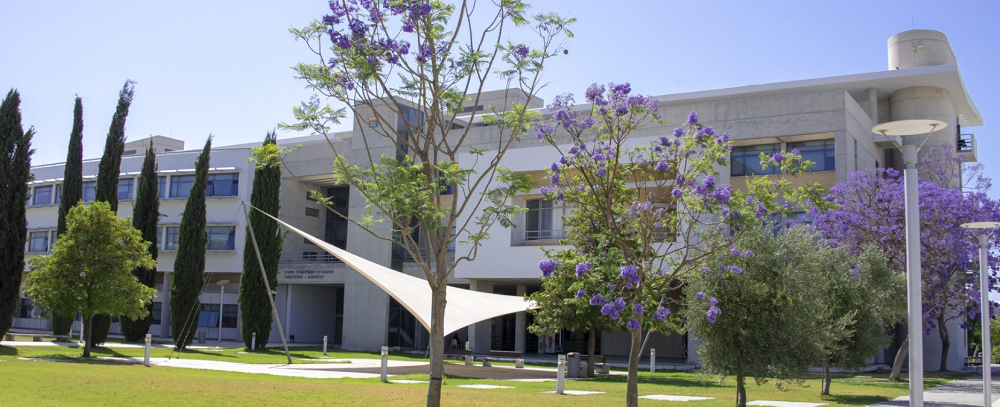
In the framework of the research project entitled “Eco-evolutionary patterns in Cyprus: Studying patterns of genetic differentiation within an oceanic island using species with different evolutionary history and ecological adaptations (EVOLCYP)”, funded by the Foundation (EXCELLENCE/0918/0161, 2019-2022) with Professor Spyros Sfendourakis (Laboratory of Ecology and Biodiversity, Department of Biological Sciences) as scientific supervisor, two workshops took place from 26-27 September 2022 at the University of Cyprus. The first workshop, with more technical content, was addressed to researchers involved or interested in the study of biodiversity, and the second to representatives of governmental and other organizations active in related fields.
Talks were given by project researchers from all the collaborating parties, namely the University of Cyprus (Ecology and Biodiversity Laboratories, and Molecular Ecology and Evolution Laboratories), the University of Crete (Natural History Museum of Crete and Molecular Systematics Laboratory) and the Heidelberg Institute of Theoretical Studies (Exelixis Lab), explaining techniques and presenting the results of the project.
Through the EVOLCYP project, the research team managed to investigate a small part of the rich biodiversity of our island, adding a small stone to the much needed research on the origin and evolution of Cyprus’ biodiversity, using modern methods and techniques.
This research project aimed to investigate for the first time at a global level how several different organisms that form part of the country’s important biodiversity are differentiated within the island. The study of the evolutionary differentiation of organisms within an island, resulting from a combination of ecological, palaeogeographical and other historical factors, has not been adequately studied to date and is one of the key priorities identified in the field of evolutionary ecology and the study of biodiversity in general. Two endemic lizards and four other species groups belonging to the terrestrial isopods, small invertebrates that are highly endemic to the island, were selected as typical examples of organisms for this study.
We should point out the importance of Cyprus as a model for such studies, as it is one of the largest “oceanic” islands in the Mediterranean, i.e. islands that emerged from the surface of the sea and were never joined to neighbouring continental areas, so all organisms living there have arrived through dispersal. Despite its importance, the rich biodiversity of Cyprus remains largely unexplored.
An important factor in the evolution of the organisms of Cyprus is expected to be the fact that for many millions of years, Cyprus was in the form of two (at least) separate islands, which emerged from the sea surface around 20 and 15 million years ago, each roughly corresponding to the present-day Troodos massif on one side and the Pentadaktylus on the other.
These two “old islands” came together and gave the present configuration only in the last 1 million years or less. The long isolation of the island allowed the biodiversity that colonized it to differentiate in a distinct way from the ancestral populations in the surrounding mainland areas, so that now we find many endemic species on our island, i.e. species that live only in Cyprus and nowhere else in the world. At the same time, Cyprus also shows great diversity in terms of its ecosystems, from the black pine forests on the Troodos peaks to its coastline, as well as a very strong human influence for at least 10,000 years.
Thus, among the questions that the EVOLCYP project has attempted to address are the following: what role has the geological history of the island played in shaping Cypriot biodiversity? Are there differences between the organisms living in the Troodos area and those of the Pentadaktylus? Are organisms differentiated at the genetic level regardless of what we observe in their morphology? How can the findings of such studies help us to more effectively protect the country’s valuable endemic biodiversity?
In order to answer these and other questions, samples of the above mentioned organisms were collected from all over Cyprus, while partners from Greece, Israel and Turkey sent samples from the surrounding areas to enable their comparison. Genetic material, i.e. DNA, was extracted from these samples and state-of-the-art methods were applied to it in order to analyse it and provide the information needed to understand the evolution of the organisms.
After much effort and time, and through complex and computationally demanding analyses, the findings have exceeded all expectations in terms of the diversity that organisms exhibit at the genetic level! Huge diversity was discovered that does not manifest itself in the form of organisms, so it would have been impossible to detect without these methods. The role of the paleogeography of the island turns out to be very important, as the two mountain ranges still retain traces of the old division into two “old islands”. However, the results of the research also showed that humans strongly influence the patterns of species diversification, as they move, intentionally or not, organisms from one place to another and radically change the island’s environment, endangering the even greater than thought endemic Cypriot biodiversity.
Proposals have already been published in scientific journals to identify new endemic species on the basis of their genetic material and further publications are in preparation to communicate these findings to the scientific community. It is clear that in the future similar diversity will be recognised in other groups of organisms, showing that much of the true biodiversity of Cyprus is still hidden. It is also clear how necessary it is to study it further through systematic research with modern tools. Finally, the much increased endemism that is coming to light makes the need to protect Cyprus’ biodiversity even more urgent.
Information: Laboratory of Ecology and Biodiversity, Department of Biological Sciences https://sfendour.wixsite.com/biodiversitylab







Leave A Comment